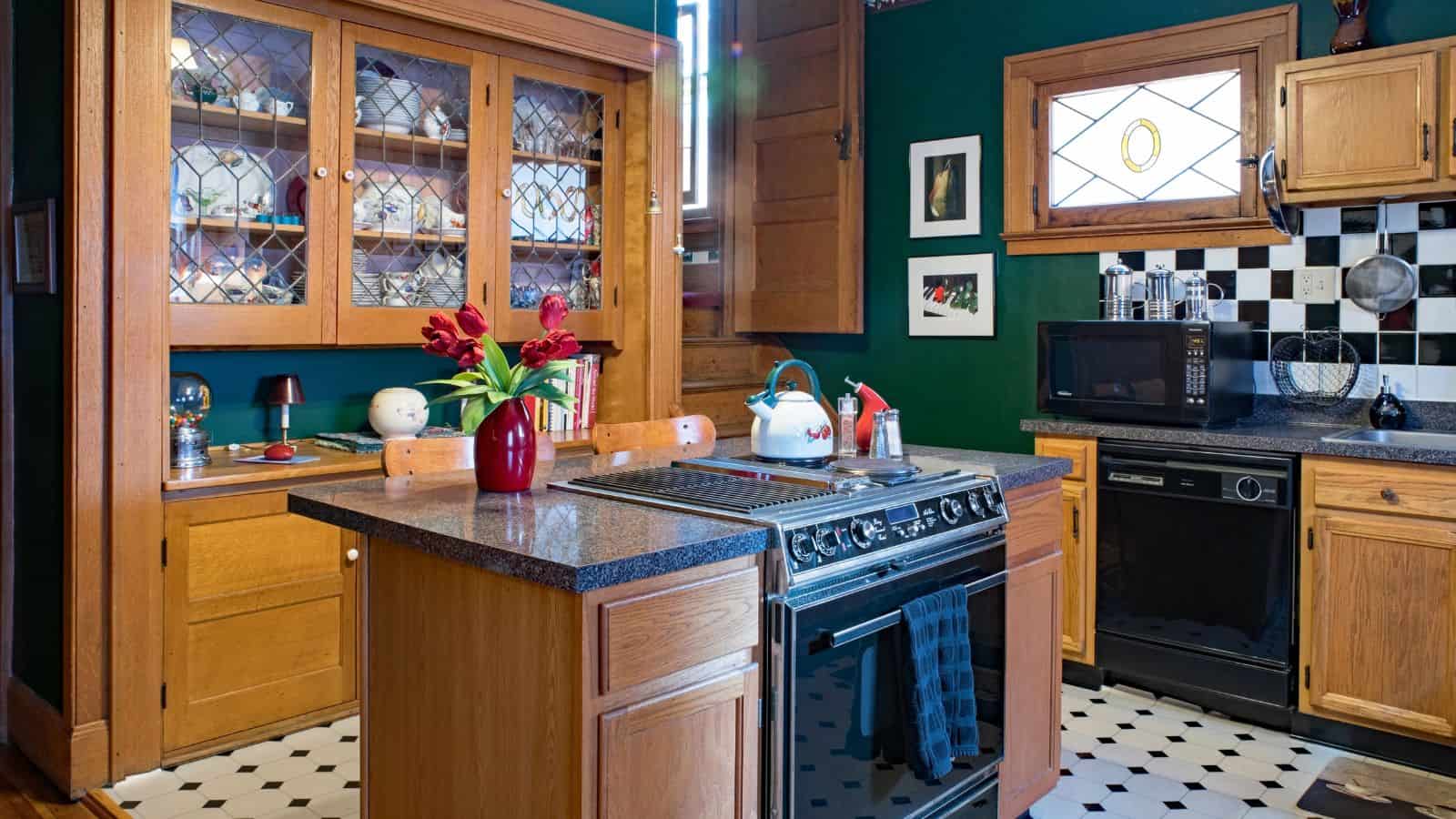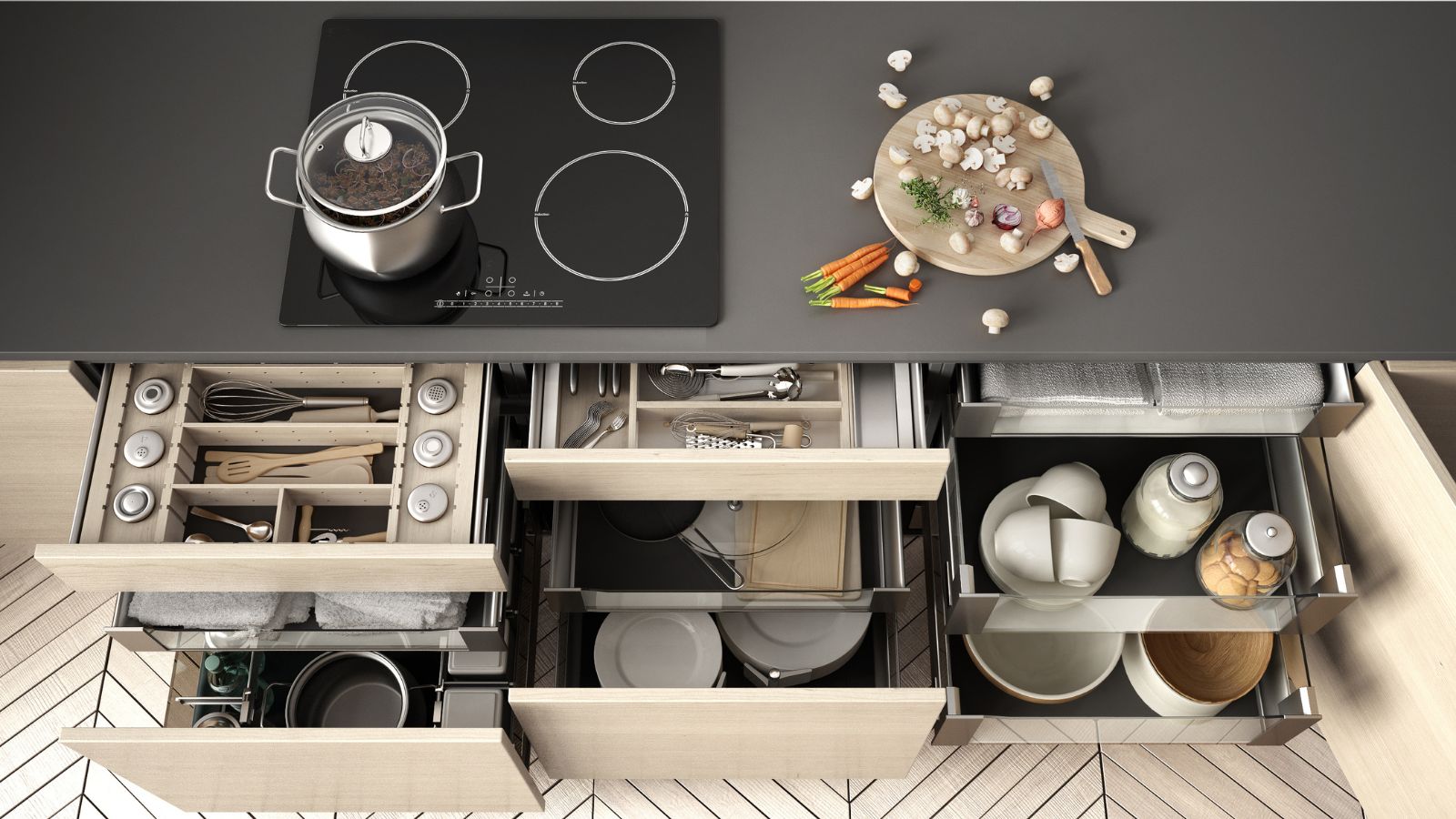If you spend a lot of time in the kitchen preparing meals, baking, or even just hosting guests, the idea of redesigning your kitchen can be really tempting. Of course, there are all manner of wonderful renovations and additions that you could install, but we’re afraid that some of your ideas might not be the best. To help you avoid any common pitfalls, here are some kitchen design mistakes that you’ll probably regret later down the line.
Choosing Trend Over Timelessness

It can be easy to fall into the trap of choosing trendy kitchen elements, but while this might give you short-term satisfaction, don’t go overboard. A style that’s all the rage today might feel tired next season, leaving you wanting yet another refresh. Therefore, designers typically recommend focusing on classic design choices for major elements while adding smaller trendy accents that can be easily swapped out. This way, your kitchen stays fresh without needing a full overhaul.
Neglecting Counter Space

In any kitchen, counter space is a top priority, yet it’s often overlooked during planning. Limited surface area can quickly make cooking, prepping, and even simple tasks feel cramped. Therefore, it’s best not to compromise your counter areas for fancy appliances. At the very least, consider adding an island to extend your countertop space if you’re insistent on using your existing space for other needs.
Underestimating Storage Needs

Just like with countertop space, storage can make or break a kitchen. Cabinets, drawers, and pantry space all help keep essentials within reach and clutter out of sight. Because of this, you should remember to consider what you’ll need in terms of storage before redesigning your kitchen. Don’t forget to consider tailored storage solutions, too, such as specialized spaces for large pots or spices.
Poor Lighting Choices

Considering that you’ll be spending so much time in your kitchen, it would be foolish to disregard lighting. Sufficient lighting will greatly improve both the look and usability of your kitchen, yet it’s often one of the last considerations. Dim or poorly placed lights can make cooking challenging and affect the ambiance, so remember to consider all types of light in your space, including natural, ambient, and accent lights.
Ignoring Ventilation Needs

Sure, ventilation might not be the most glamorous aspect of kitchen design, but it’s crucial. Without proper airflow, lingering cooking odors and excess moisture can become issues. Furthermore, health and safety standards suggest investing in a good quality range hood to prevent moisture buildup and maintain air quality, keeping your kitchen fresh and damage-free over time.
Overloading with Open Shelving

Bringing back to the topic of storage, open shelves are trendy and visually appealing, but people often regret them as they require constant upkeep. Dust and grease buildup can quickly make them look cluttered if you’re not vigilant. So, find a balance of closed cabinets and a few open shelves, helping you to showcase special items without making it too difficult for yourself.
Misplacing the Sink, Stove, and Fridge (Work Triangle)

The sink, stove, and refrigerator form the “work triangle” of the kitchen, and their placement is key to efficient workflow. If they’re too far apart or awkwardly positioned, cooking can feel like a chore. It might sound like jargon, but the work triangle really is foundational in kitchen design to keep movement during cooking efficient and natural, so don’t overlook it.
Choosing Style Over Function for Cabinets

As with any aspect of your kitchen, don’t choose style over functionality when choosing cabinets. Yes, beautiful cabinets can elevate your kitchen, but fancy handles, delicate finishes, or tricky-to-open designs can become a nuisance. Meanwhile, practical cabinet choices, especially for handles and finishes, make daily kitchen use more convenient and are highly advised by designers.
Selecting Fragile or High-Maintenance Surfaces

Be very careful when choosing premium countertops and flooring materials for your kitchen because while they will no doubt look stunning, they are often highly susceptible to scratches, stains, or chipping. Marble, for example, is luxurious but prone to staining and requires special care. So, consider materials that match your lifestyle, especially if you cook a lot.
Overlooking Outlet Placement

People often forget about the importance of electricity access in the kitchen; imagine setting up your blender only to realize there’s no outlet nearby! Strategically placed outlets are essential for a functional kitchen, especially for appliances you’ll use regularly. We’d recommend planning multiple outlets in various convenient spots, ensuring you avoid messy cords stretching across the space.
Skipping a Backsplash

Don’t be fooled into thinking that backsplashes are purely decorative; they protect walls from splatters and spills, making life in the kitchen a lot easier. Without one, walls can quickly show wear and tear, especially behind the stove and sink. As a result, design experts widely recommend backsplashes for both practical and aesthetic reasons.
Going Too Dark with Cabinets or Floors

Considering the mess that gets made in the kitchen, it’s tempting to choose dark cabinets or flooring when having a redesign. Yes, they can give kitchens a sleek look, but contrary to popular belief, they often highlight dirt, dust, and scratches more than lighter tones. This is because dark finishes are prone to showing dust and smudges, especially in a well-lit kitchen, so balancing them with lighter elements is often suggested for a cleaner appearance.
Forgetting About Traffic Flow

In busy kitchens, space for movement is crucial, preventing you from having to call out, “Too many cooks!” If your layout doesn’t consider traffic flow, you may feel cramped, especially with more than one person cooking, so thoughtful layout planning is essential to allow easy movement. Don’t forget that guests might want to enjoy spending time in the kitchen while you cook, too.
Using Too Many Different Materials or Colors

You really shouldn’t go overboard when it comes to mixing textures and colors in the kitchen, as it can lead to visual overload. Rather than adding character, excessive variety can make the kitchen feel chaotic rather than cohesive, just as with any other room in your home. Therefore, we’d suggest selecting a few complementary materials and colors, creating a unified look that’s both pleasing and easy to decorate around.
Opting for Large Islands in Small Kitchens

As we mentioned earlier, having a kitchen island can be really handy, but only if the space allows for them. In a smaller kitchen, a large island can dominate the area, making it feel far smaller than it really is. For limited areas, alternatives such as smaller peninsulas are often recommended, allowing you to keep comfort and functionality intact.
Skipping Drawer Dividers and Organizers

The final kitchen design mistake that you’ll probably regret later is choosing drawers without dividers or organizers. Quickly, this can become messy, making it difficult to find utensils and tools when you need them. Thankfully, you can always buy dividers and organizers later down the line, but you’ll want to ensure that you buy drawers that actually fit them.
